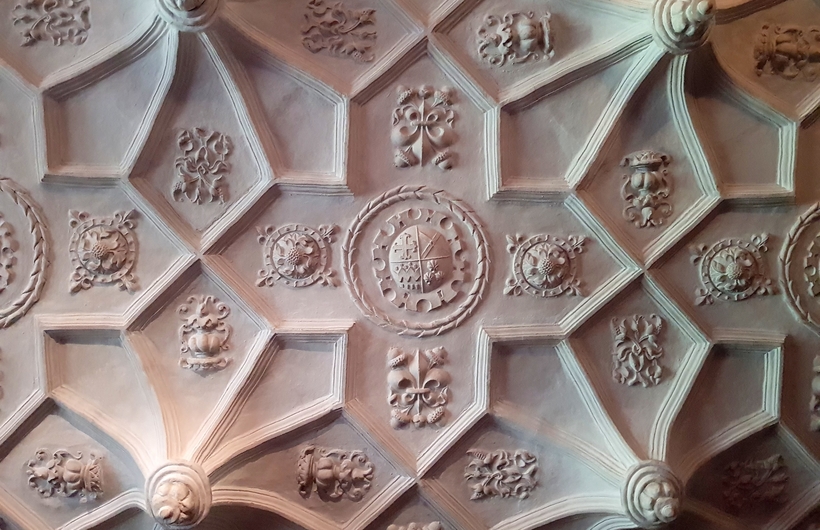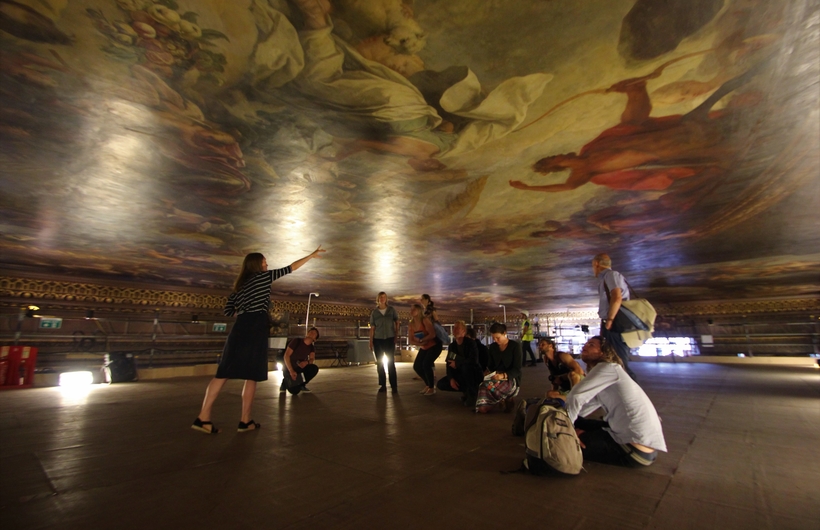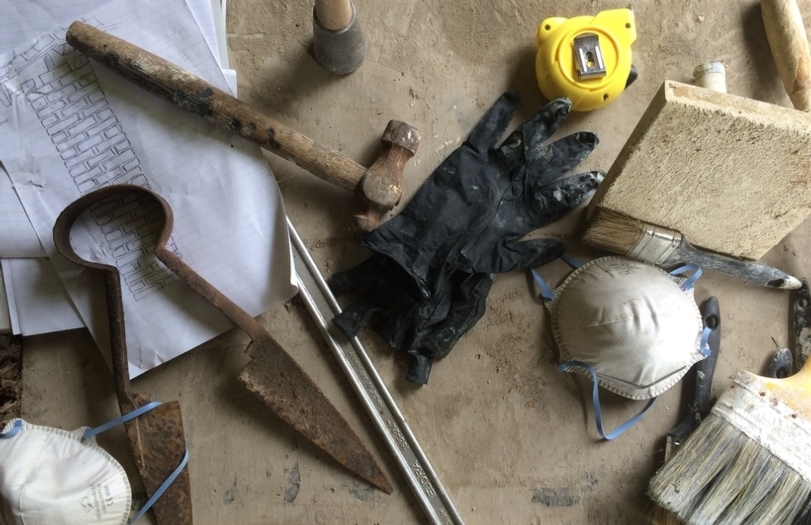A Fellow's life
At The Churches Conservation Trust, we are committed to supporting traditional craft skills, which are vital to sustaining our churches. This year, we have supported Paul Walters, heritage plasterer from Carmarthenshire, as he undertakes the Society for the Protection of Ancient Buildings' William Morris Craft Fellowship. Here, he tells us a little about his experience.
To say that the past six months has been somewhat of a whirlwind would be a huge understatement. A large tornado or small hurricane may be more apt.However, this hurricane has been a very pleasant experience. It has carried me from the tip of the South East, across to Wales and up through the Peak District, Lake District and in to Scotland. It has given me the opportunity to take in some of Britain’s most beautiful cities, towns, buildings, and of course, people.
Granted, this wasn’t exactly hardship; there may have been some tea and scone involvement at the occasional National Trust site and maybe a quaint Free House here and there too … but for the most part, it has given me a crooked neck!

Jacobean plaster ceiling
The reason being, as a lime plasterer, my enthusiasm for our built heritage inevitably ends up with me staring at ceilings in awe as I try to sketch a complex Jacobean design or contemplate the incredible level of craftsmanship that has gone into its creation. After all, this appreciation for traditional crafts is what the William Morris Fellowship is all about!
I am very fortunate to be one of this year’s Fellows, joining a long list of Fellows that have followed a similar path since 1986. The Fellowship is overseen by the organisation that William Morris established back in 1877, the Society for the Protection of Ancient Buildings (SPAB). The scheme aims to develop the knowledge base of a craftsman, and not just in a practical sense, or academic for that matter. It’s also an ethical and philosophical journey. During the six months, we are exposed to an immense amount of information from a broad range of practitioners and professionals. The slight torment of the journey is in establishing our own moral toolbox that we hope to apply to our personal works in the future.

Painted hall, Greenwich
With the windy hurricane easing off, I look forward to reflecting on my experiences and collate the wealth of information to which I have been exposed. My aim is to inject this knowledge in to all of my personal jobs in the future. Whilst running my conservation company, Just Lime Ltd, I have always endeavoured to continue to learn, experiment and adapt.
I have had the pleasure of working on some beautiful buildings across the country and applied my own ethos to all. Our portfolio carries a true representation of our efforts to do a building, or rather the craftsmen that built it, the justice they deserve.

First and foremost, I am a conservation practitioner. To me, this requires an appreciation of skill and work. In practical terms, this can sometimes result in a slower work rate as careful consideration goes into establishing an appropriate approach as one tries to avoid causing unnecessary destruction of one fabric in order to conserve another. It also means that something that was built one – four – six hundred years ago requires a level of appreciation and respect. Nowadays, most people cannot physically replicate the work, let alone using the materials, methods and processes that were available at the time of its construction.
If the William Morris’s philosophies were more broadly taught, our built heritage would certainly be better off.
Recruitment for the 2018 Fellowship is underway. If you think this might be for you, visit the Fellowship website.

